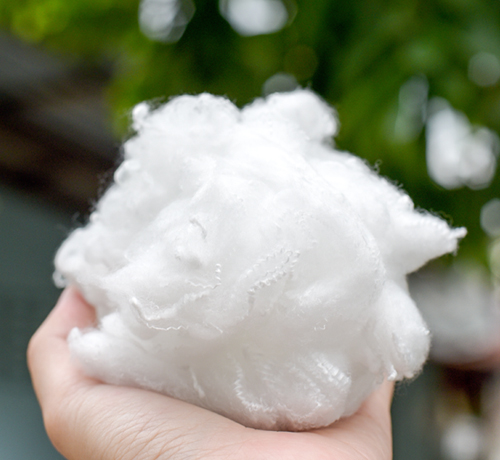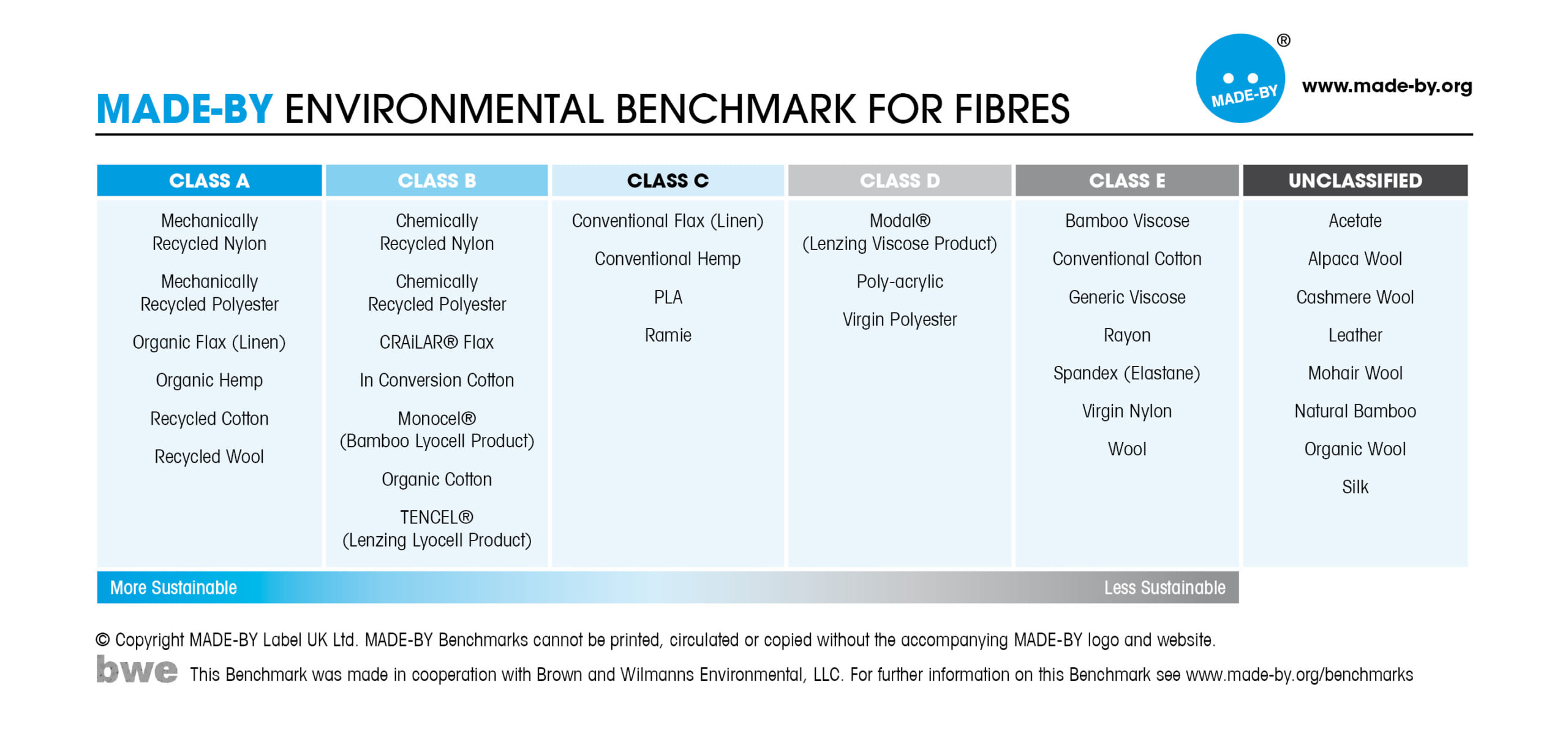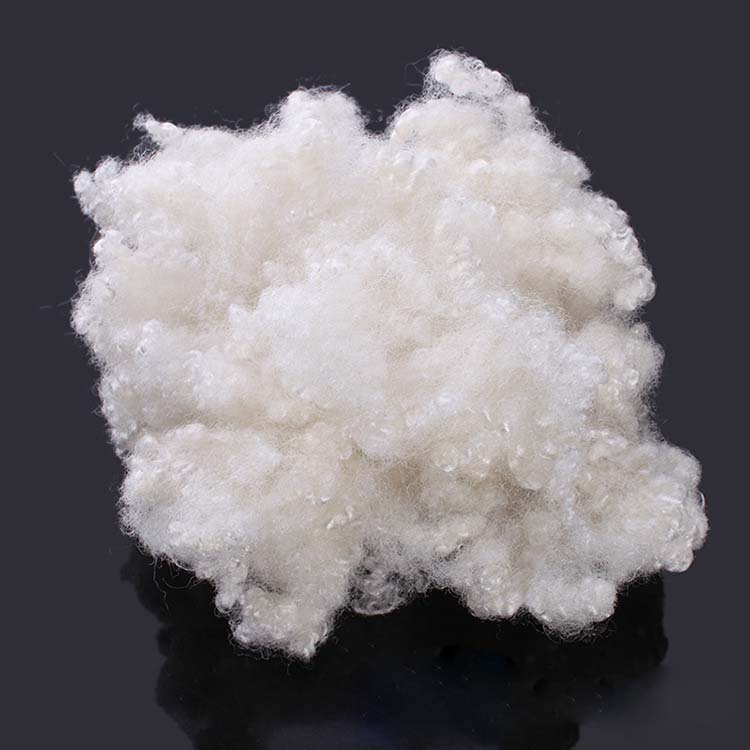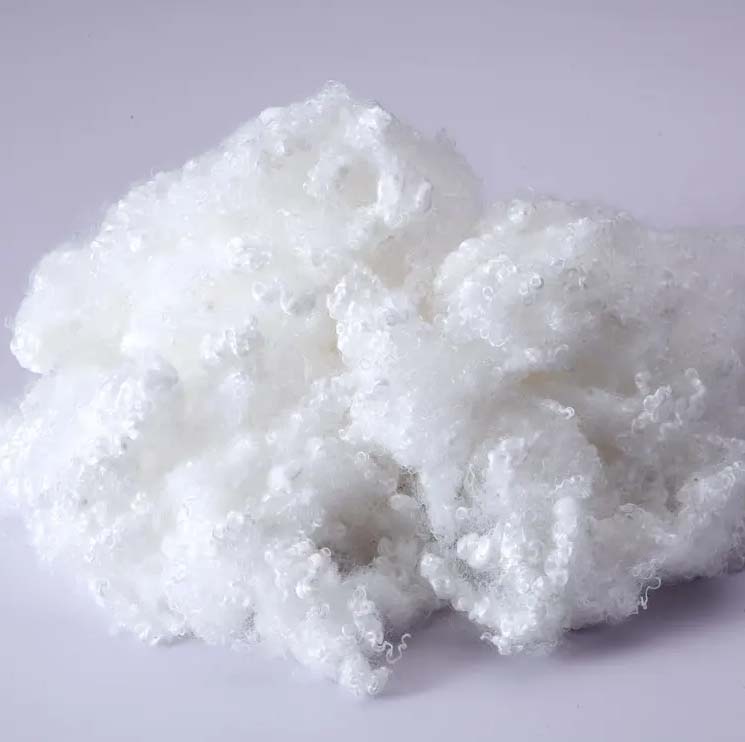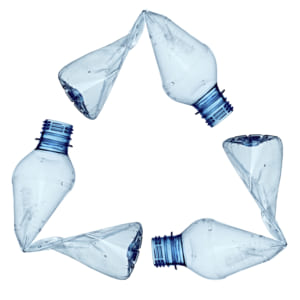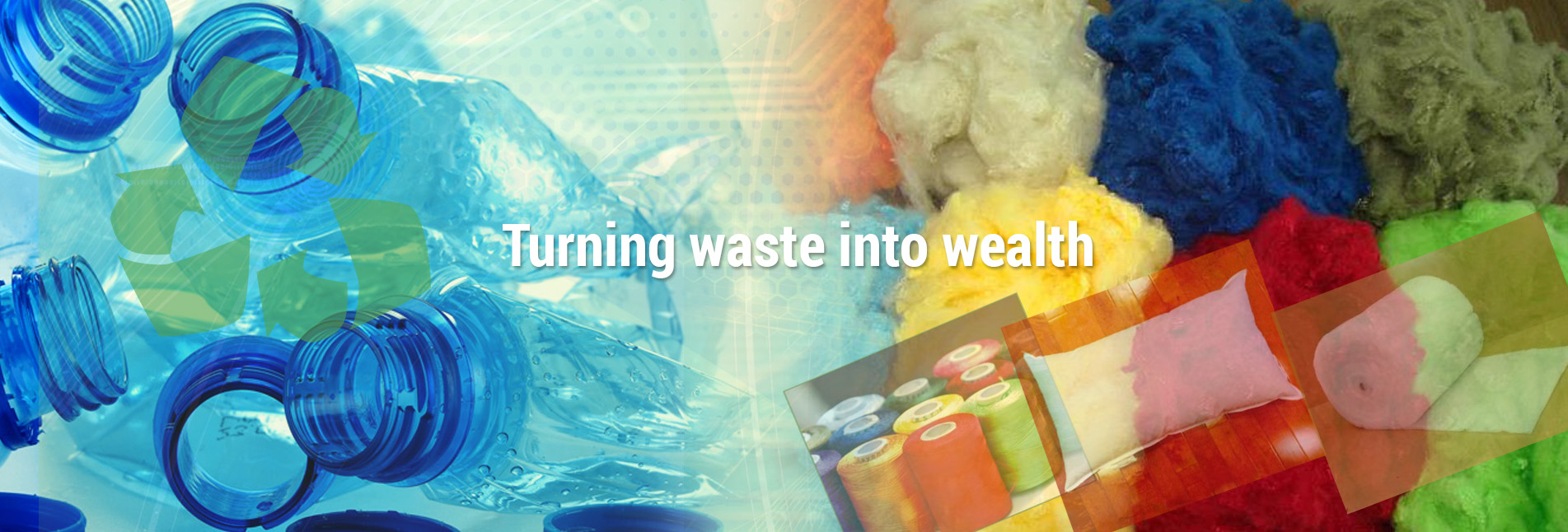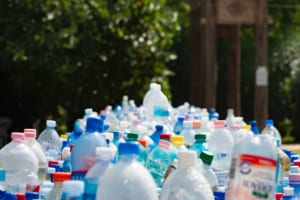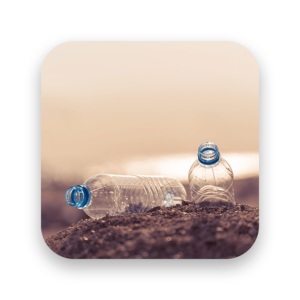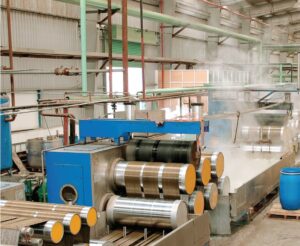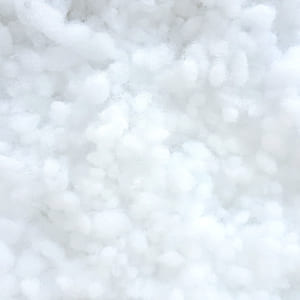What is polyester?
Polyester, a synthetic fiber derived from oil, is the world’s most commonly used fiber. It overtook cotton use in 2002 and, with other synthetic fibers, makes up more than 65 percent of fibers used in the textile and apparel industry. Polyester is light, strong and easily dyed, can be woven or knitted, and is easily blended with other fibers. Its easy-to-wash, wrinkle-free nature made it revolutionary when it first emerged in the 1970s. Its relative cheapness has fuelled the growth of fast fashion.
Demand for polyester has grown strongly and steadily. In 1980, the volume of global polyester production was 5.2 million tons. By 2014, this reached 46.1 million tons. Across this period, 73.4 percent of demand growth for all fibers was driven by polyester.
Polyester makes up more than 65% of fibers used in the textile and apparel industry.
Polyester is made through a chemical reaction involving coal, petroleum (from crude oil), air, and water.
In 2015, more than 330 million barrels of oil were used to make polyester and other synthetic textiles – the equivalent of more than 21,000 Olympic swimming pools1.
Polyester production has a lower environmental impact than natural fibers production in terms of water usage and wastewater2. However, the energy required to produce polyester (125 MJ of energy per kilogram produced) and the greenhouse gas emitted (14.2 kg of CO 2 per kilogram produced) makes it a high-impact process. In 2015, polyester produced for clothing emitted 282 billion kg of CO 2 – nearly three times more than cotton.
Pollution is also a problem. Factories producing polyester without wastewater treatment systems can release potentially dangerous substances including antimony, cobalt, manganese salts, sodium bromide, and titanium dioxide into the environment. As an oil-based plastic, polyester does not biodegrade like natural fibers. Rather it stays in landfills for several decades at least – and potentially for hundreds of years. When washed, fibers from polyester textiles and clothing are shed and enter waterways and oceans as microplastic fibers, according to recent studies3. Fish, shellfish, and other aquatic creatures ingest the microplastics, which accumulate, concentrating toxins up the food chain. These can enter human food chains and pass into the wider environment.
Limitations of recycling fiber
Most polyester used in clothing currently is virgin polyester. Very few clothes– less than 1 percent of collected textiles – are recycled back into clothing or textile use. As most clothes now are either polyester or part polyester, we are still a long way from closing the loop. Recycling does occur but it has limitations. The majority of recycled polyester yarn and fabrics come from recycled plastic – rPET – in particular from plastic bottles. This seems a more environmentally sustainable solution to virgin polyester – it uses between 30 and 50 percent less energy, reduces the need for primary extraction of crude oil, and cuts the amount disposed in landfill.
However, recycled polyester is not without its issues. Each time plastic is reheated for recycling it degrades, so it cannot be recycled indefinitely (though researchers and start-up businesses are developing solutions to this). The base color of the plastic chips from the recycled plastic can make dyeing more difficult, so more dye and more water are needed – although inconsistent coloration can still occur. The high-temperature plastic recycling process can also release a carcinogenic antimony compound into the atmosphere. The ease with which polyester can be blended with other fibers also causes problems with recycling. Of all the polyester produced each year, more gets used in poly-cotton blends than in 100 percent polyester fabric. It is not currently possible to commercially separate poly-cotton and recycles the constituent fibers, although there are some innovative developments in this area. Most poly-cotton fabrics that do enter recycling, rather than just being landfilled, get ‘downcycled’ for use as insulation and furniture stuffing.
Notwithstanding these issues, recycled polyester is still a more environmentally sustainable fiber than virgin polyester. And new advances in bio-based polyester – i.e., one that does not use oil as its raw material – may prove to be more sustainable yet. Both partially and fully bio-based polyester fibers have lower land usage requirements, lower energy usage, and lower greenhouse gas emissions.
Current benchmark rankings and alternatives
Taking all current environmental impacts into account, the Made-By Environmental Benchmark for Fibres ranks virgin polyester low in Class D, although it is slightly better than nylon, conventional cotton, and viscose (including ‘bamboo’ viscose) in Class E. The ranking given is a total amortized score taken from the Benchmark’s weightings on different kinds of environmental impact such as water usage, pollution, and biodegradability.
Chemically recycled polyester ranks in Class B and mechanically recycled polyester in Class A. More positive alternatives to virgin polyester include recycled polyester (from both pre and post-consumer used polyester textiles) and biosynthetic from partial or 100% natural renewable sources.
Your washload, microplastics, and marine pollution
Microplastics are plastic particles of less than 1mm in diameter. These are accumulating in marine habitats around the world, representing a new type of environmental and health threat. Pollutants such as pesticides and manufacturing chemicals adhere to the particles that then accumulate in aquatic life and consequently enter into human food chains. Research now shows that a major source of microplastics – if not the largest source – comes from wastewater contaminated with plastic fibers, “microfibres” released when washing clothes made from synthetic materials (polyester, acrylic, polypropylene, etc.).
Experiments using domestic washing machines demonstrated that a single garment can produce more than 1,900 fibers per wash. Fiber shed rate varies depending on fabric type and blend and different garment construction techniques. The rate of shedding also appears to differ with the age of the clothing (1.8 times more shed for older garments) and washing machine type (5.3 times more shedding from a top-loading washing machine).
A study conducted for Patagonia estimated that for every 100,000 people, up to 110kg of microfibres would be released into local waterways daily – equivalent to the pollution caused by approximately 15,000 plastic bags. Another growing source of plastic pollutants into the environment, according to the Patagonia study, is microfibres in sewage sludge applied as a fertilizer to farmland. Until economic alternatives are available to mimic the (highly valued) performance qualities of materials like polyester, the elimination of synthetic textiles is extremely unlikely.
This makes mitigation the key approach in reducing microfibre pollution. Companies like Patagonia are supporting scientific research into microfibres and encouraging customers to do what they can to reduce their impact (e.g. by purchasing quality garments that shed less). Besides, several start-up companies such as the Rozalia Project and Guppy Friend are developing and selling microfibre filters for use in domestic washing machines.
Basic information about Recycled Polyester
Polyester (PET) is one of the most commonly used materials for fashion. PET is a man-made fiber. Conventional PET is made from petrochemicals (or in plain English: oil), which is problematic in terms of resource depletion. Besides, PET waste is either adding to global warming when burned after use or resulting in disastrous pollution of nature when it ends up in landfills and oceans. However, in the Cradle to Cradle terminology, PET is a material belonging to the technical cycle that has the potential to be recycled. Recycling PET reduces its impact substantially, but not entirely. Currently, most recycling of PET is done mechanically, but new and more efficient technologies are being developed to enable chemical recycling of polyester so that the material can hopefully be put back into the loop in the future. The PET that is being recycled today mostly comes from water bottles. This material deep-dive looks at chemically recycled polyester (carpet).
Characteristics of recycled polyester
Chemically recycled polyester will appear similar in look and feel to virgin polyester and can be used for similar if not the same applications as virgin polyester. It can also produce high-quality yarn if the waste stream is sufficiently purified. Polyester is commonly used in everyday clothing because it resists stretch and wrinkles, does not shrink, and is easy to wash, dry, and use. Its durability and weather resistance make it well suited for outdoor or high-stress use, and thus for application in practical products such as jackets, fleece, and athletic wear. It can also be used as a filler or insulator in outerwear. Like virgin polyester, chemically recycled polyester can easily be blended with cotton and wool.
Polyester may have poor aesthetic qualities due to the smooth, round fiber surface, and is not a breathable fabric. Polyester’s relatively low water retention (and thus low wicking capacity) can translate to less comfort when used in apparel. However, through blending or other processing, such as texturing and chemical treatments, polyester can be manufactured to look and feel similar to natural fibers.
- Typically stronger than cotton
- Resistant to stretching and shrinking
- Resistant to bleaching
- Quick-drying
- Wrinkle- and mildew-resistant
- Abrasion-resistant
- Retains heat-set pleats and creases
- Machine washable
Market outlook of recycled polyester
Exploring Sustainable Fashion with Recycled Polyester:
In response to a growing awareness of environmental issues and a desire for sustainable products, recycled polyester fibers are increasingly being recognized as a sustainable alternative to traditional polyester. As consumer preferences shift towards eco-friendly options, there is expected to be a rise in the demand for products made from recycled materials.
Government Initiatives Supporting the Use of Recycled Polyester:
Various countries are now introducing regulations and policies aimed at promoting the use of recycled materials and reducing waste. This is anticipated to drive up the demand for recycled polyester fibers across different industries.
Cost-Effectiveness of Utilizing Recycled Polyester:
One of the advantages of recycled polyester fibers is that they are often more cost-effective to produce compared to newly manufactured materials. This affordability can be a beneficial option for manufacturers seeking to lower their production expenses.
Availability of Raw Materials for Recycled Polyester:
The availability of post-consumer waste, such as plastic bottles and other plastic items, is on the rise. This increased availability makes it more convenient and cost-effective to produce recycled polyester fibers.
The Versatility of Recycled Polyester Fiber:
Recycled polyester fibers have a wide range of applications, from clothing and textiles to industrial and automotive uses. Their versatility makes them an appealing choice for manufacturers seeking sustainable materials for a variety of products.
In conclusion, the market outlook for recycled polyester fiber appears promising in the foreseeable future, as the growing emphasis on sustainability and environmental issues continues to shape the demand for recycled materials.
How to make recycled PET?
Material Sourcing
The primary feedstock used to produce cRPET is polyethylene terephthalate (PET) waste derived from post-consumer plastics such as soda bottles, which typically are collected locally, sorted, compacted, and baled for reuse. Other materials that can be chemically recycled into polyester include polyester manufacturing scrap, PET film and tape, and polyester garments, including certain blends with nylon, cotton, or rayon. Roughly five 2-liter PET bottles are required to produce a T-shirt.
Processing
Collected PET wastes are sorted by color and material type, separated from unwanted materials (e.g. paper, metal), and the labels are removed. The sorted PET is ground into flakes, and wet separation can be used to remove non-PET plastics such as bottle caps. The flakes are washed with detergents or solvents to remove contaminants and then dried.
Depolymerization
In chemical recycling, the PET flakes are depolymerized to their monomer or oligomer intermediates (meaning that they are broken down to the base-chemical molecule). This can be done through many various processes (this is all very technical, so to learn how you can purchase the PDF available on TextileExchange.com).
The various processes to depolymerize PET flakes result in specific material outputs (PTA, DMT, or BHET) that can replace their petrochemical-derived equivalents in the process used to make virgin PET.
Spinning & Texturing
The molten PET polymer can be melt extruded into pellets or chips before spinning into staple fiber, or it can be melt spun directly to a lament. The spun fiber is textured to improve the flexibility, softness, feel, and recovery power of synthetic yarns; the output is either drawn textured yarn (DTY) or air textured yarn (ATY). One method of texturing involves drawing, heating, and twisting the yarn simultaneously.
Textile Construction
Spun yarn can either be knit or woven into a textile. These processes are the same for virgin as for recycled polyester. Knitting typically requires less energy than weaving.
To put it short, cRPET exchanges oil for plastic waste in the production of polyester, which is of course better than producing it the conventional way. The process does produce some waste, but it is a much better alternative to burning the waste or dumping it in landfills and oceans.
INS AND OUTS
Process Inputs
Chemical recycling of PET has been reported to save 45-60% in non-renewable energy use compared to virgin PET fiber. However, the energy inputs to polyester manufacturing are generally greater than those required for natural fibers such as cotton.
In comparison to other textiles, very little water is required to produce polyester.
To manufacture chemically recycled polyester fabric, chemicals are required to clean and separate the PET waste, to depolymerize the PET flake, and, finally, to produce PET from monomers.
The primary physical inputs to the process are recycled PET wastes, such as plastic bottles or recycled textiles.
Because recycled polyester utilizes waste material as its feedstock, the land use required for production is relatively low, and landfill disposal is reduced.
Process Outputs
By-products from the production include the unwanted wastes that are removed during sorting, separation, and washing, such as labels, metals, non-PET plastics (e.g. PE from bottle caps), and colored bottles that may give fibers an unwanted yellow or grey tone. The by-products and co-products of depolymerization depend upon the method used.
The production of one kilogram of staple fiber produces approximately 0.23-0.29 kg of solid waste, the majority of which is generated during the conversion of bottles to flake. So by using waste material, chemically recycled polyester diverts waste from landfills and incineration.
Using human toxicity as an indicator, chemical recycling has only 17% of the impact of virgin polyester.
Chemical recycling of polyester does not produce a significant amount of wastewater.
The global warming potential of cRPET is typically 36% – 24% lower than that of virgin fiber depending on the method for depolymerization.
IMPACTS
Score In MSI
To examine the difference in the impact of cRPET compared to conventional PET, you can try swapping the raw material input from fossil fuel-based PET to semi-chemically recycled content in the Higg MSI. This reduces the score significantly.
Remember that the Higg MSI is a cradle-to-gate material scoring tool, which addresses impacts that range from the extraction or production of raw materials, through manufacture and finishing, to when the material is ready to be assembled into a final product.
OTHER CONCERNS
Potential Social and Ethical Concerns
Because recycled waste is used in place of crude oil, recycled polyester is free of the social and ethical concerns related to oil extraction, and it contributes to the conservation of a non-renewable resource and reduction in global warming impacts. No animal-based products are required to produce chemically recycled polyester. Potential social concerns may exist with the collection and sorting processes where working conditions may be poor.
Availability Of Material
Chemically recycled polyester is less prevalent than mechanically recycled or virgin polyester, because of the higher costs. More than half of all PET bottles collected worldwide are processed in China.
Availability Of Certified Material
To ensure a recycled content claim can be backed up, it is important to have proper certification and tracing of the recycled raw material to the end product. Available international standards include the Global Recycled Standard (GRS) and the Recycled Claim Standard (RCS) by Textile Exchange and the Recycled Content Certification by SCS.
#MATERIAL SNAPSHOTS
This post series #Material Snapshot shares a curated mix of Textile Exchange’s Material Snapshots and Materials Summaries, for free. To access all available information, visit Textile Exchange, where full pdfs detailing every material can be bought.
Textile Exchange’s Material Snapshots and Materials Summaries are a set of tools designed to help the reader understand why the choice to use certain materials makes a difference in the textile, apparel, and footwear industry. That choice could result in positive or negative impacts depending on the material and supply network details. These snapshots and summaries can help brands make decisions on which preferred fiber or material is the right choice for them by providing a concise look at the raw material options, including agricultural processes, social impacts, and processing differences that make material sustainability profiles different. They also provide information on material properties, certifications, and sourcing information since sustainability is only one of the many reasons why a particular material is chosen.
The two sets of resources – the Material Summaries and the Material Snapshots – are designed to be used alongside each other within an organization to help educate and enable informed, intelligent fiber and material choices. The Material Summaries are geared more towards the designer/developer user in the company, whereas the Material Snapshots are designed for more technical users such as materials, sourcing, and sustainability professionals.
Recycling Process of Polyester
The majority of the world’s PET production – about 60% – is used to make fibers for textiles; about 30% is used to make bottles.
It’s estimated that it takes about 104 million barrels of oil for PET production each year – that’s 70 million barrels just to produce the virgin polyester used in fabrics.
The reason recycled polyester (often written rPET) is considered a green option in textiles today is twofold, and the argument goes like this:
- Saving energy (33% to 53% less energy than produce from virgin)
- Estimate at 54.6% fewer CO2 emissions
- Keeping bottles and other plastics out of the landfills.
Some major companies in recycling-
- Tex America, inc
- Napcar, USA
- Fleissner GmbH and Co.
FUN FACTS about PET:
- The first PET bottle was recycled in 1977
- Recycling 1 ton of PET bottles saves 7.4 cubic yards of landfill space
- It takes 5 recycled two-liter PET bottles to make one square foot of carpet.
- PET bottles and containers are actually a form of polyester, which is why it is so easy to recycle bottles into T-shirts, sweaters, and socks.
- It takes 35 liter recycled PET bottles to make the soft filling inside a sleeping bag, called “fiberfill.”
- Plastic makes up 8% of our trash by weight but is 24% of the volume
- It having a crystallinity of around 60-65%.
- It’s having a high glass transition temp. around 70-80 ºC.
- It is produced basically two routes by step-growth polymerization.
PROCESS TO MAKE POLYESTER
Glycolysis process:
EG+ PET are taken in molar basic ratio 1:4 to 1:6 & 0.5 % zinc acetate as a catalyst.
Applications-
- Resins
- Coating
- Laminates
- Dyes
RECYCLING OF POLYESTER BOTTLES
Common PET depolymerization treatments for recycling.
Current work aims at effective recycling of waste PET from soft drink bottles by glycolysis method and thereby utilization of the recycled product for coating application.
PET WASTE USING TO VARIOUS TEXTILE AUXILIARIES
1.Softners-Conversion of BHET TO BHECL form.
BHET+thionyl chloride +.5% dimethyl formaldehyde in toluene as a catalyst after reaction excess toluene was collected via vacuum distillation.
Quaternarization of the amine derivative was carried out by adding dimethyl sulfate (1:1). Sodium carbonate was added as an acid quencher and the mixture was kept at 70 °C for 3 h. Upon distillation of toluene, the cationic softener product was obtained. Following were the fatty acids and amines tried. It gives the details of the reactants Since DETA reacted to BHECL has two free amine groups, whereas EDA reacted to BHECL has one free amine group and hence one mole of this amine combines with one mole of fatty acid.
USE OF PET WASTE TO MAKE HYDROPHOBIC DYESTUFF
PREPARATION OF PET POLYOL :
Glycolzed product is used for synthesis for PE polyol.
Preparation of PE polyol coating
It is used with different isocyanate curing agent ratios NCO: OH (1:1) OF 1:1 Dimethylformamide is used as a solvent to the system.
RECYCLE PAPER TREATED WITH PET RESIN OR PET COATING :
- The PET dispersion can be used with other wet strength resin, such as poly amide-epichlorohydrin.
- PET not only adds additional dry & wet strength but not repulable wet strength resin repulable.
- LSE-Low surface energy product
- HSE-High surface energy product
- HTG-High Tg product
Advantages: Its having the high potential to save a large number of trees and energy while limiting filling.
Recycled pet fiber in concrete –reinforcement fiber:
The water-dispersible polymer used in coating recyclable paper can be used as a wet-end additive to improve paper dry & wet strength. We can make paper water repellent, paper stiff with good dry strength, or both dry & wet strength good by treating with different resins.CONCLUSION
- Waste PET was depolymerized via glycolysis product was used for the synthesis of the new polyester polygon. This was used for coating applications having excellent mechanical properties like flexibility, impact resistance, scratch & hardness, good chemical resistance.
- To produce new material from plastic waste, PET was oligomerized by poly-functional alcohol and mixed temp. The presence of oligomers enhanced thermal stability.
- PET waste is used in useful textile finishing softeners. By the high purity of virtual manner BHET, it can further be converted into a quaternary compound which is used as softeners in textile finishing.
- Recycled PET does not adversely affect the properties of the resin-based on recycled PET can help decrease the cost of polymer end product & reduce environmental pollution.
Source: https://www.commonobjective.co/

